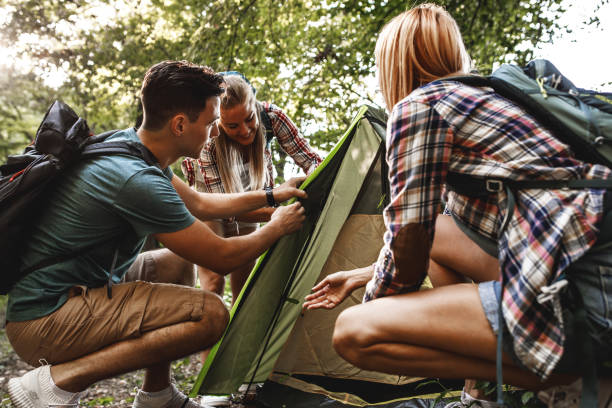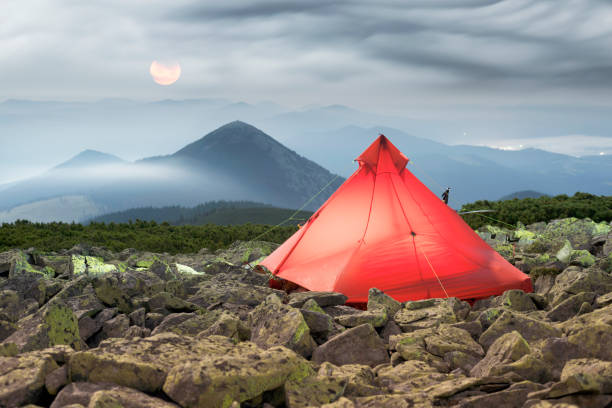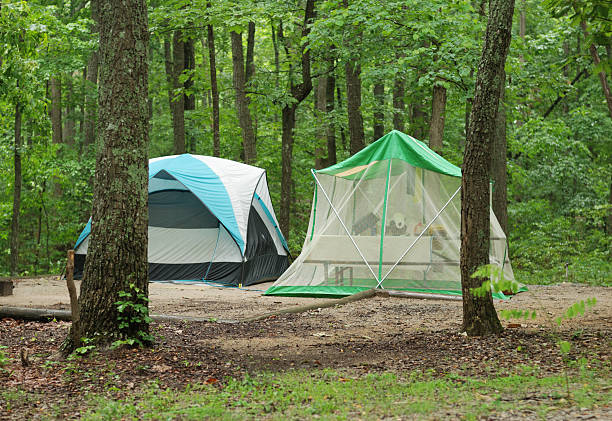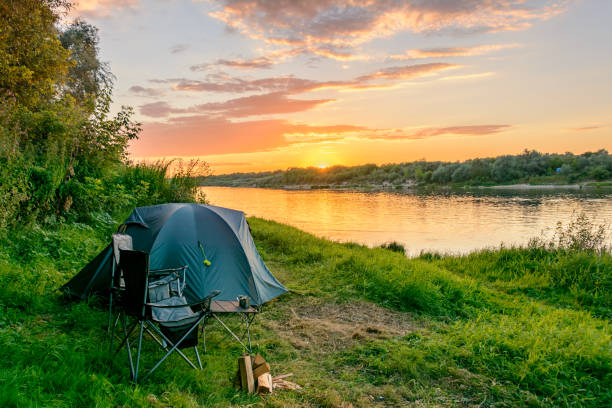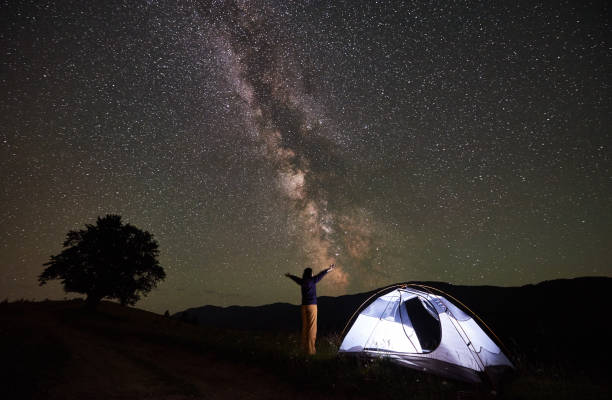Let’s face it – backpacking gear can burn a hole in your wallet faster than a campfire devours marshmallows. And when it comes to tents, the phrase “you get what you pay for” often rings true. But after plenty of trial and error, we’ve found that you can score a solid, weather-worthy best backpacking tent under $100 – and have it last through actual outdoor adventures.
We’ve taken these seven tents on hiking trips, camping weekends, and backpacking treks through wind, drizzle, and sun-soaked trails. We didn’t just unbox them and toss out a review – we slept in them, set them up in less-than-ideal conditions, and tested their limits.
What we discovered? Some tents in this price range are absolute champs – roomy, weather-resistant, and easy to pitch even when you’re dog-tired after a long hike. Others? Well… let’s just say they didn’t make the list.
So here are 7 best camping tents under $100 – starting from the solid contenders to our personal favorite. If you’re on a budget but still want gear that won’t bail on you in the backcountry, keep reading.
Table of Contents
- Amazon Basics Camping Tent
- CAMEL CROWN Tent
- CAMPROS CP Tent
- JELUCAM Dome Tent
- Coleman Skydome Tent
- Londtren Camping Tent
- Wakeman Camping Tent
- Our Verdict!
- How to Choose the Best Backpacking Tent Under $100
- Weight and Packability Matter More Than You Think
- Weather Resistance Is Non-Negotiable
- Setup Should Be Fast and Frustration-Free
- What makes a good backpacking tent?
- What is the difference between a tent and a backpacking tent?
- What is the best bedding for a tent?
7
Amazon Basics Camping Tent
We brought the Amazon Basics Camping Tent on a beginner-friendly overnight near the foothills, and honestly, we weren’t expecting much. One of the top camping tents under $100, this one surprised us.
The setup was a breeze—less than four minutes thanks to the snag-free sleeves and shock-corded poles. Even after a long hike, we had it standing before we could even argue over who was unpacking the snacks. With a spacious 7’x5’ floor and 45” center height, two adults fit comfortably, and we still had elbow room for our packs.
Rain rolled in around midnight, and that’s when the coated polyester and welded seams really proved their worth. Not a single drop got in. The removable rainfly paired with a clever back window and cool-air port helped keep airflow steady, even with the rainfly on. No stuffy tent syndrome.
We especially liked the little touches—a mesh storage pocket inside, and the compact carry bag that made packing up fast and painless. Plus, the tent’s made with nearly 60% recycled polyester, which is a nice bonus for eco-minded campers.
All in all, the Amazon Basics tent won’t win awards for premium feel, but for the price, it’s a dependable, no-fuss tent that we’d take on casual trips again.
P.S. Feel free to watch this detailed review of the product by Opinionated Cheapskate – Outdoor Gear & Electronics Reviews on YouTube!
Pros:
✅ Spacious for two with solid headroom
✅ Fast setup in under 4 minutes
✅ Water-resistant with welded seams and airflow vents
✅ Best 2 person tent under $100
Cons:
❌ Basic build quality; not ideal for rugged conditions
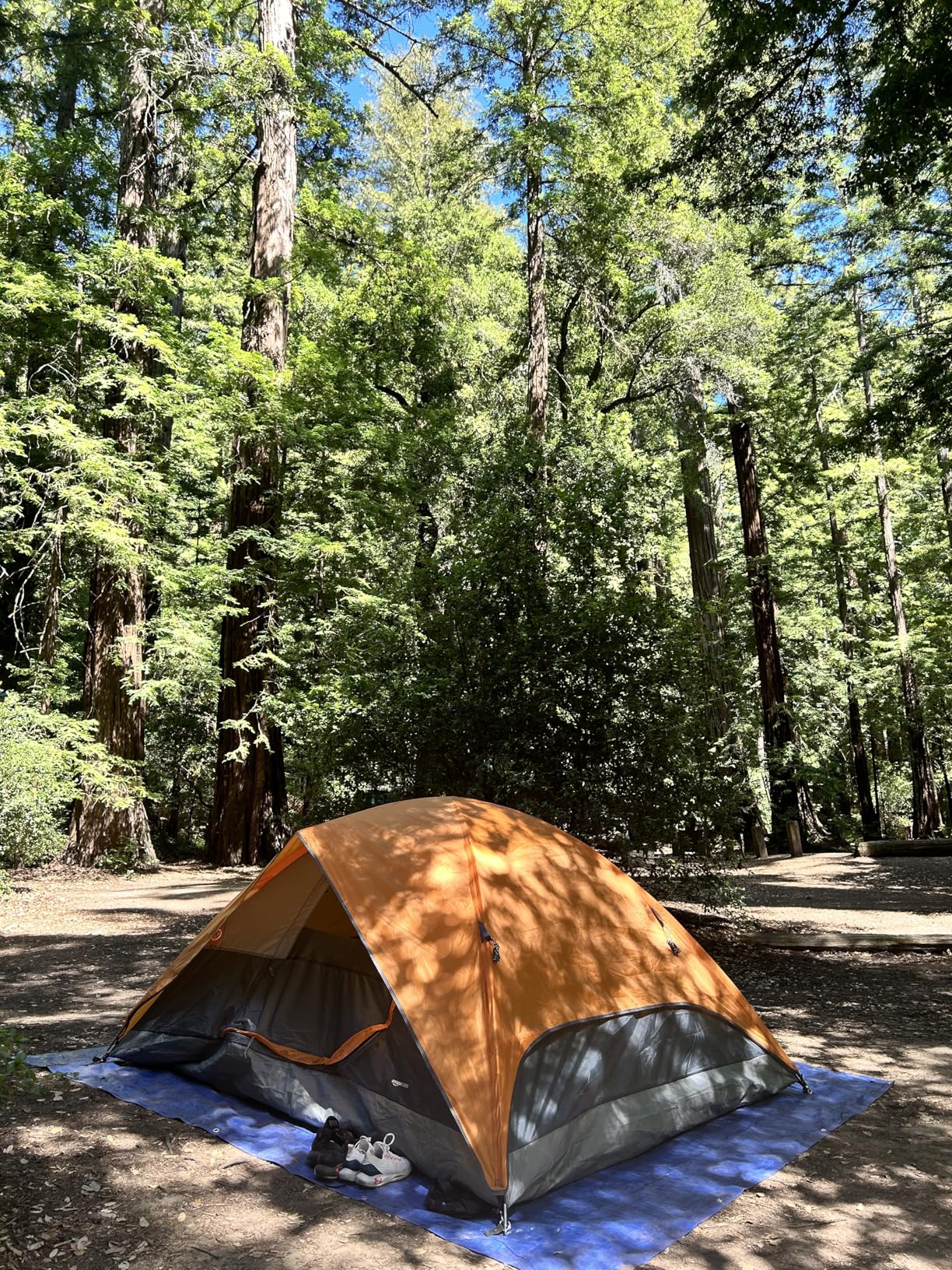
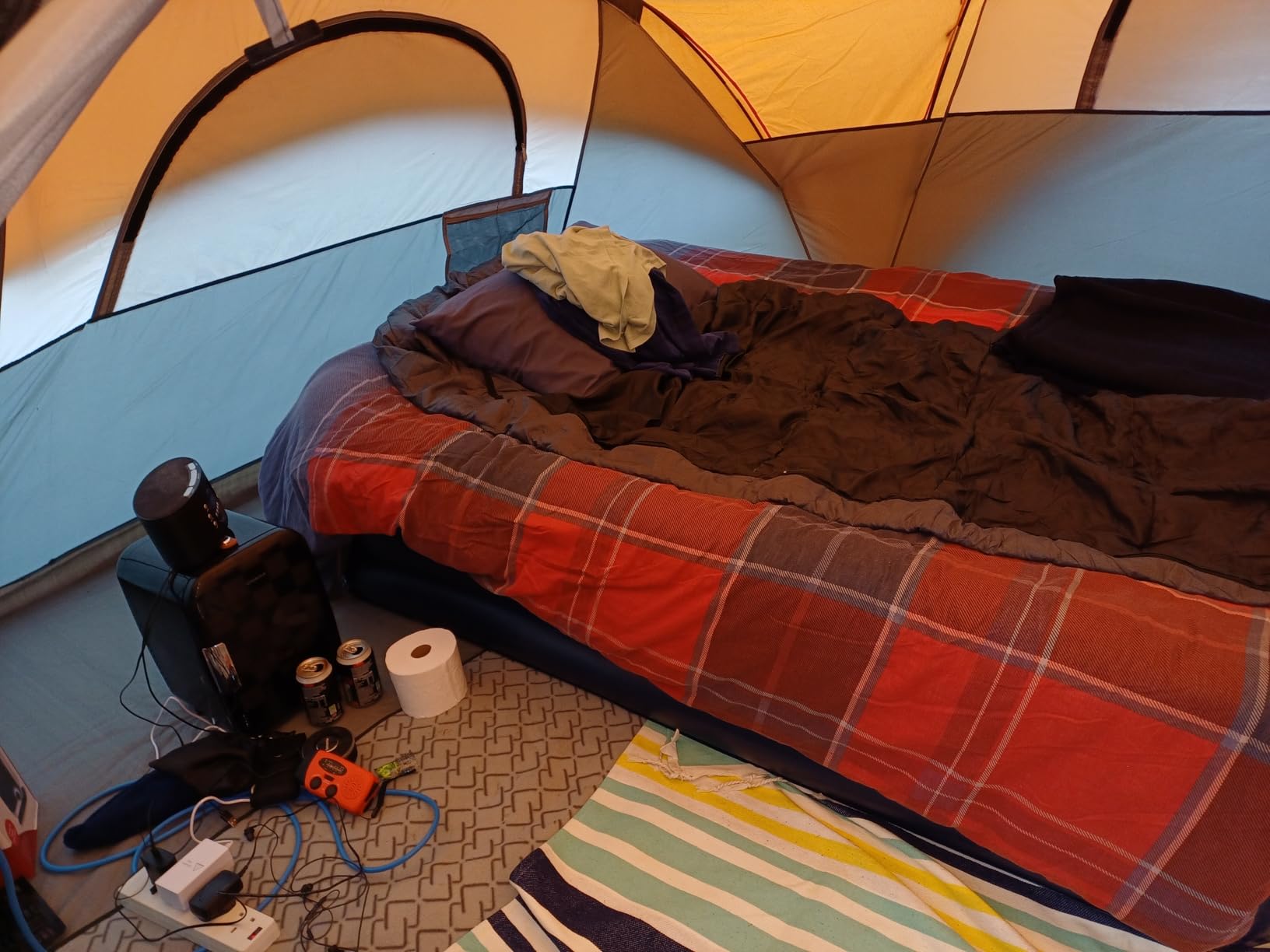
6
CAMEL CROWN Tent
Best Sturdiness. When we headed into the Southwest for a five-day solo backpacking trip, the CAMEL CROWN Tent was our gear of choice—and it earned its keep.
We loved how light and compact it was in our pack, barely taking up space. Setup was fairly smooth, though we had one hiccup during a dry run at home. But out on the trail, with real ground beneath us, the poles slipped into place easily and the whole structure stood firm.
The polyester shell, PU2000 Oxford fabric, and aluminum poles held up impressively, especially considering the rocky terrain and sharp desert plants we were dealing with. Despite the occasional gusts, the tent never buckled. And get this—we didn’t even stake it down the first two nights. It stayed upright with just a backpack inside for weight. That’s solid.
Ventilation was a highlight—the double-layered top and mosquito-proof screens kept air flowing and bugs out. We slept cool and woke up to crisp desert mornings without any condensation build-up.
For around 2 pounds and under $100, the CAMEL CROWN Tent gave us just about everything we needed: compact, lightweight, durable, and versatile. It’s not a luxury lodge, but when you’re perched under desert stars, it’s more than enough. Perfect tents under $100!
Also, you might like to see our exclusive roundup – Tent Camping in High Winds – 7 Rugged Tents That Hold Ground!
Pros:
✅ Lightweight and compact for backpacking
✅ Great ventilation with dual-layer top and mesh
✅ Sturdy build with aluminum poles and wind ropes
Cons:
❌ Tight fit for two; best for solo use
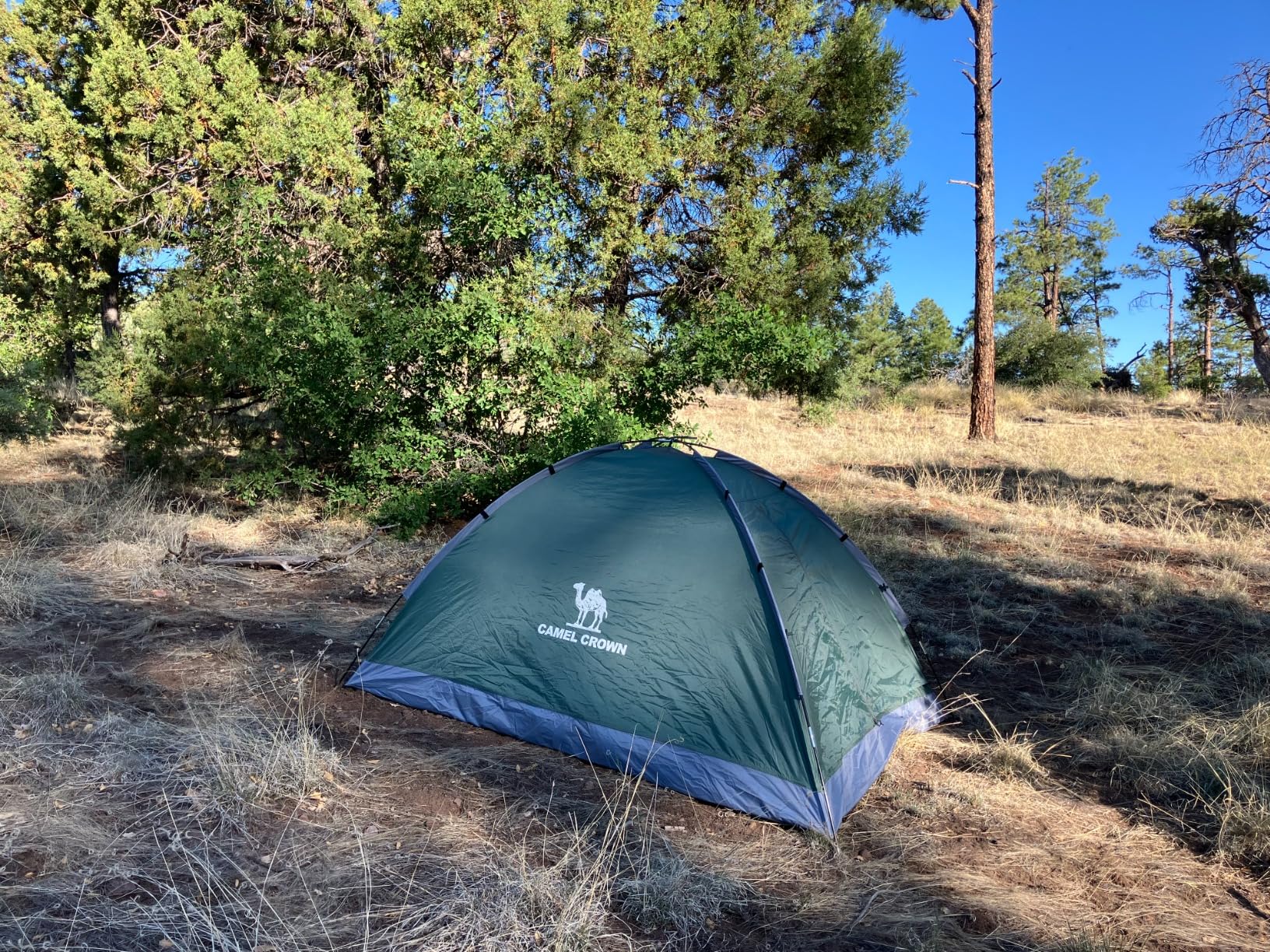
5
CAMPROS CP Tent
If you’re heading out with a buddy or just like a little breathing room, the CAMPROS CP Tent is a great bet. We took this one on a lakeside weekend trip, and from the first setup, it felt like a win.
With 8′ x 7′ dimensions and 50 inches of center height, this tent felt palatial for two people. We had room for our sleeping bags, gear, and a cooler without feeling crammed. The large mesh windows brought in tons of air, even with the rainfly on, which made it perfect for the warm, humid night we had.
One of us was a first-time camper, and even solo they managed to set it up in about five minutes flat. No confusing poles or head-scratching instructions—just a quick and intuitive setup. It handled a light overnight rain with ease, thanks to its polyester waterproof coating and thick PE floor. The gear pockets inside helped us stay organized, and the zippers didn’t snag once.
The CAMPROS CP felt like a dependable partner—affordable, spacious, and genuinely enjoyable to camp in. Best budget backpacking tent under $100, it punches way above its weight.
Pros:
✅ Roomy interior comfortably fits 4 people
✅ Large mesh windows for airflow
✅ Quick 5-minute setup, even for beginners
✅ Best 4 person tent under $100
Cons:
❌ Bulky when packed; not ideal for long treks
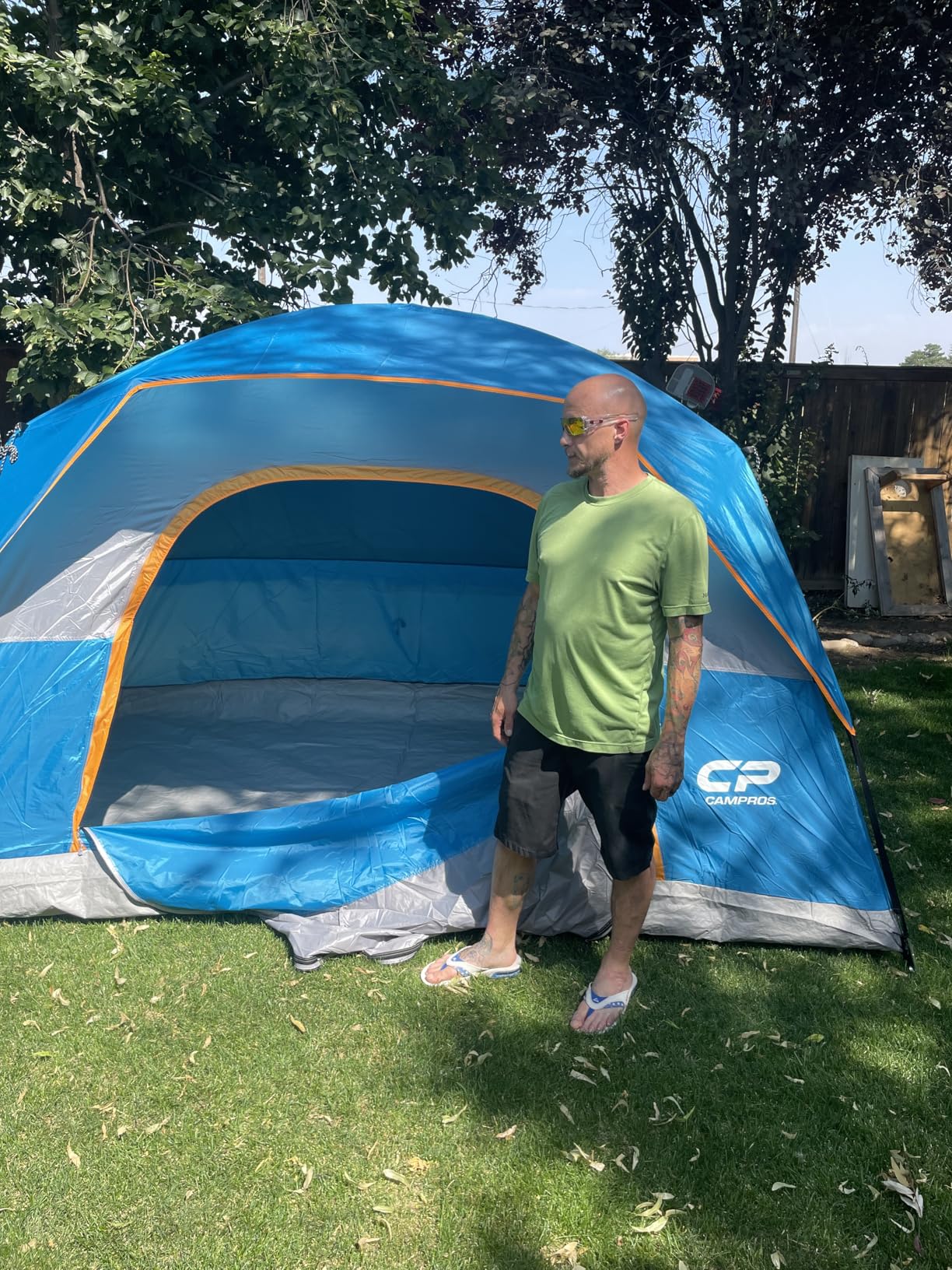
4
JELUCAM Dome Tent
Best Value for Money. This JELUCAM Dome Tent came along with us on a rainy mountain overnight, and it quickly became a go-to option for solo trips. Weighing just over 4 pounds, it was a breeze to carry up the trail, and the portable bag made packing it in and out a non-issue.
Setup? Took maybe five minutes—and that’s with a drizzle coming down. The PU3000 waterproof-coated fabric and fiberglass poles kept us completely dry, even with 48 hours of straight rain and wind. It handled it like a champ.
Now, space-wise, this is definitely a cozier setup. It fit one adult and a six-year-old, or one adult and their gear. If you’re tall (say, 6’4”), your feet might kiss the tent wall. But for most folks under 6’3″, it’s snug but livable.
The double-layer door design really stood out. We could zip open just the mesh for airflow or close it off entirely when the wind picked up. And the structure never felt flimsy—even when the weather did its best to test it.
Honestly, for what it costs, this tent delivers rock-solid performance. It might not be built for luxurious glamping, but if you’re looking for reliability and compact size in a budget backpacking tent, JELUCAM nails it.
See this one also: Instant Screen Tent with Floor? See Our Top 7 Picks!
Pros:
✅ PU3000 waterproof coating handles rain well
✅ Lightweight and portable at just 4.3 lbs
✅ Quick setup and user-friendly design
✅ Best 6 person tent under $100
Cons:
❌ Cozy fit; not much room for gear if two people inside
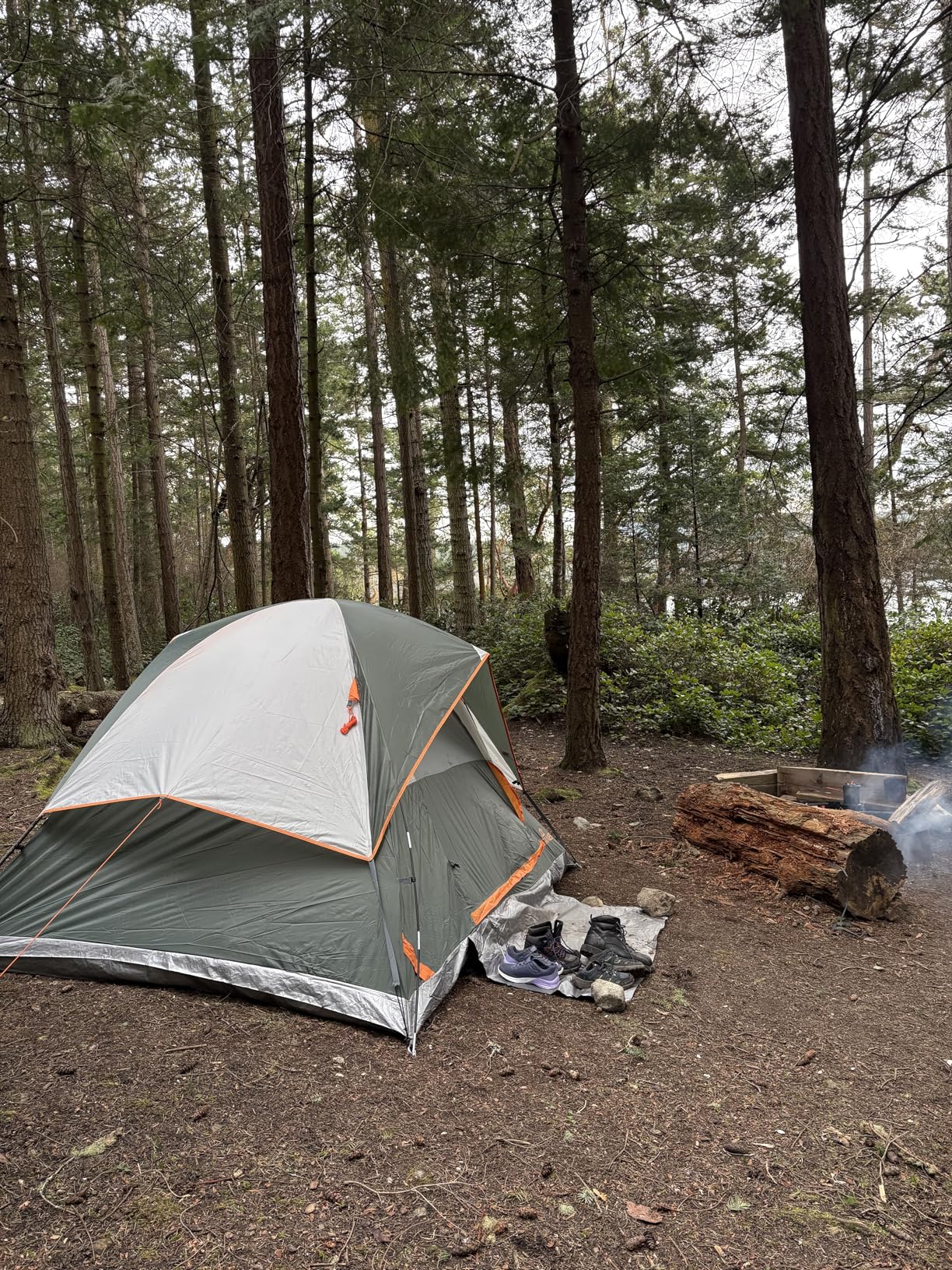
3
Coleman Skydome Tent
We brought the Coleman Skydome Tent on a three-day trip to the forested hills of Pennsylvania—and despite a couple of hiccups, this tent pulled its weight.
First off, the setup was snappy. The pre-attached poles definitely shaved time off—took us maybe six minutes, not quite the “under five” that’s advertised, but still way faster than most. The structure felt solid right away, and we loved how the near-vertical walls gave it a real sense of roominess. Compared to the usual dome shape, this tent offered 20% more headroom, and we could actually sit up, change clothes, and move around without hunching like goblins.
Now, let’s talk weather performance. We hit a rainy patch on the second night, and this tent held steady. The WeatherTec system, with its tub-like floor, welded corners, and inverted seams, kept us completely dry—even when the ground got soggy. No leaks, no pooling, just dry socks and happy campers.
That said, we did run into a bit of a quality hiccup with one of the plastic hooks arriving broken. Not a deal-breaker—we swapped it with a carabiner—but it did make us pause and wonder about quality control. Luckily, once it was up, the tent performed like a champ and didn’t show any other weaknesses.
Overall, the Coleman Skydome is a solid bet for casual backpackers or car campers who want comfort, easy setup, and reliable weather protection without breaking the bank.
P.S. Of course, you can browse the official website of the brand for more interesting options.
Pros:
✅ Extra headroom with nearly vertical walls
✅ WeatherTec system keeps rain out reliably
✅ Spacious enough for a queen air bed
✅ Perfect 8 person tent under $100
Cons:
❌ Occasional quality issues with parts on arrival

2
Londtren Camping Tent
We were camping lakeside with the family and decided to give the Londtren Camping Tent a try. Honestly, this tent won us over the second we popped it out of the bag—no joke, it just sprang to life in seconds like it had a mind of its own.
It’s a true pop-up tent, no poles to connect or sleeves to fight with. One of the easiest setups we’ve ever had, hands down. If you’ve got kids or you’re just trying to relax without wrangling with your gear, this tent is a dream.
The 9.2 x 6.6 ft floor and 4.3 ft center height gave us space to lounge comfortably. It says it fits 3-4 people, and we’d say three with gear is the sweet spot. We used the vestibule area to leave our muddy shoes and jackets, which kept the inside clean—especially after hiking through a muddy trail loop.
The mesh front and back doors made a huge difference when the sun was beating down. Air flowed through easily, and the tent never got stuffy. At night, we zipped up the nylon panels for privacy, but even then, it stayed cool and breathable.
Durability? The 190T polyester and PE floor handled some unexpected wind gusts just fine. With the included pegs and wind ropes, it stayed firmly planted. Plus, storage pockets and a lantern hook inside were a nice touch for keeping small stuff off the floor.
Honestly, the best tent for under $100. This one’s perfect for quick weekend trips, backyard campouts, and anyone who wants a zero-stress setup. For the price and ease of use, it’s hard to beat.
Pros:
✅ Instant pop-up setup in seconds
✅ Two doors & great ventilation for airflow
✅ Includes vestibule to keep gear and dirt outside
✅ The best family tent under $100
Cons:
❌ Too bulky for backpacking; best for car camping
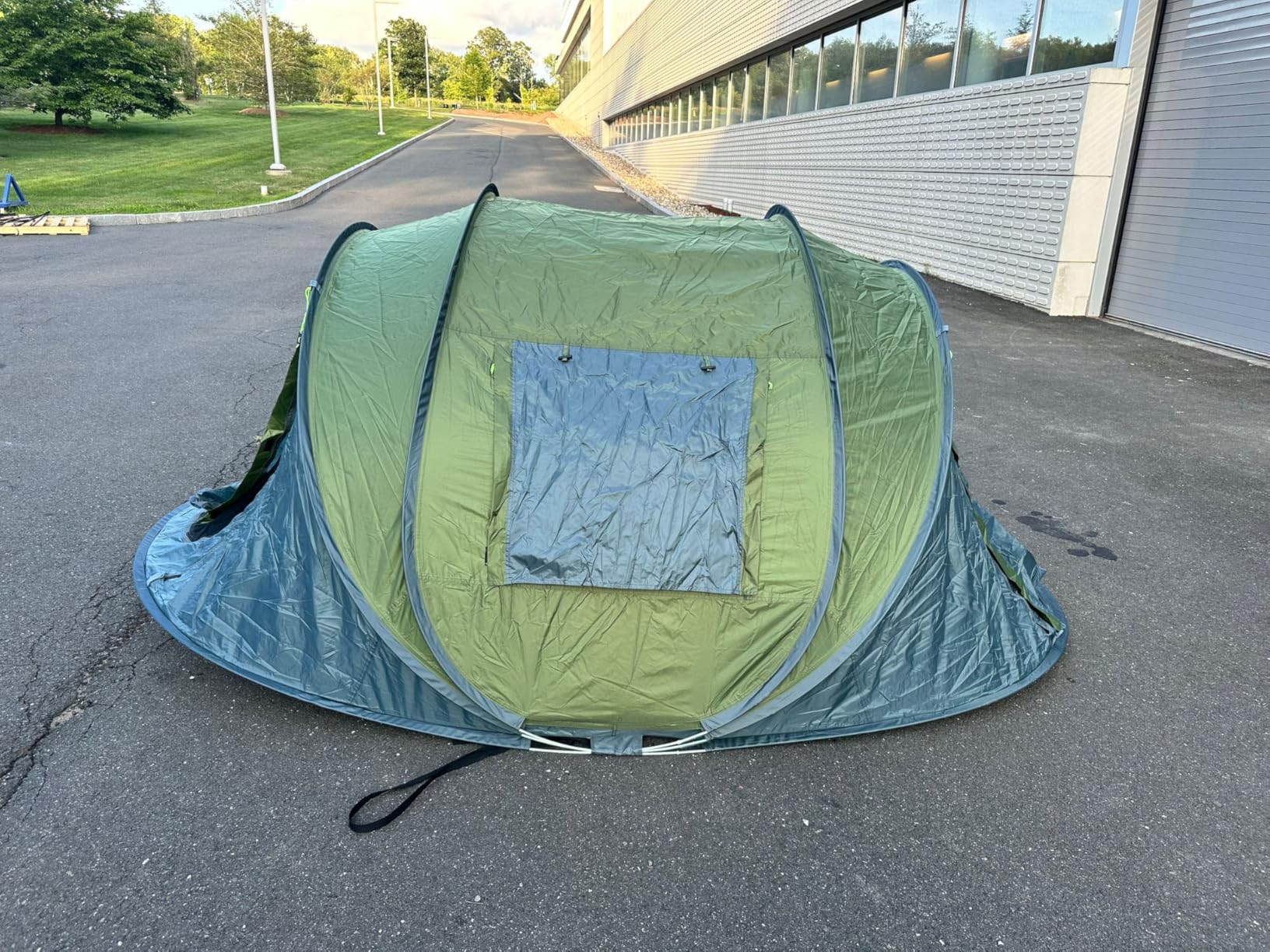
1
Wakeman Camping Tent
Best Overall. We didn’t expect much from the Wakeman Camping Tent when we packed it for a spur-of-the-moment overnight trip up the coast, but it quickly proved itself to be the MVP of our budget gear lineup.
Weighing only 2.75 pounds, it barely added anything to our pack weight. The compact size was a blessing when we were navigating some tighter, brushy trails on foot. And once we found our campsite, setup was stupidly simple—a quick unroll, a couple of fiberglass poles, and the thing was up in under 5 minutes.
We had a clear night the first evening, so we left the rainfly off and used just the inner mesh layer for an open-air experience under the stars. The next night, some clouds rolled in and we zipped on the outer layer—it kept the breeze out and gave us a cozy, dry shelter.
Despite the minimalist design, the ventilation window and dual-layer door gave us solid airflow and privacy, depending on what we needed. Inside, there’s just enough room for two people. If you’ve got gear, be ready to cuddle or stash your pack outside. We had one person plus a pack, and it was perfect.
This one’s a great pick for best camping tents under $100 especially for solo campers, light travelers, or anyone who just wants a no-fuss, dependable little shelter that won’t weigh them down—physically or financially.
Bonus: someone on our team even used it as a temporary “coop tent” for chickens during a Florida hurricane. Now that’s multitasking.
You might also like to browse a variety of options for Wakeman Tents on the official website.
Pros:
✅ Ultra lightweight and easy to carry
✅ Simple setup in minutes
✅ Great airflow with dual-layer door design
Cons:
❌ Tight interior; fits two people but no space for gear
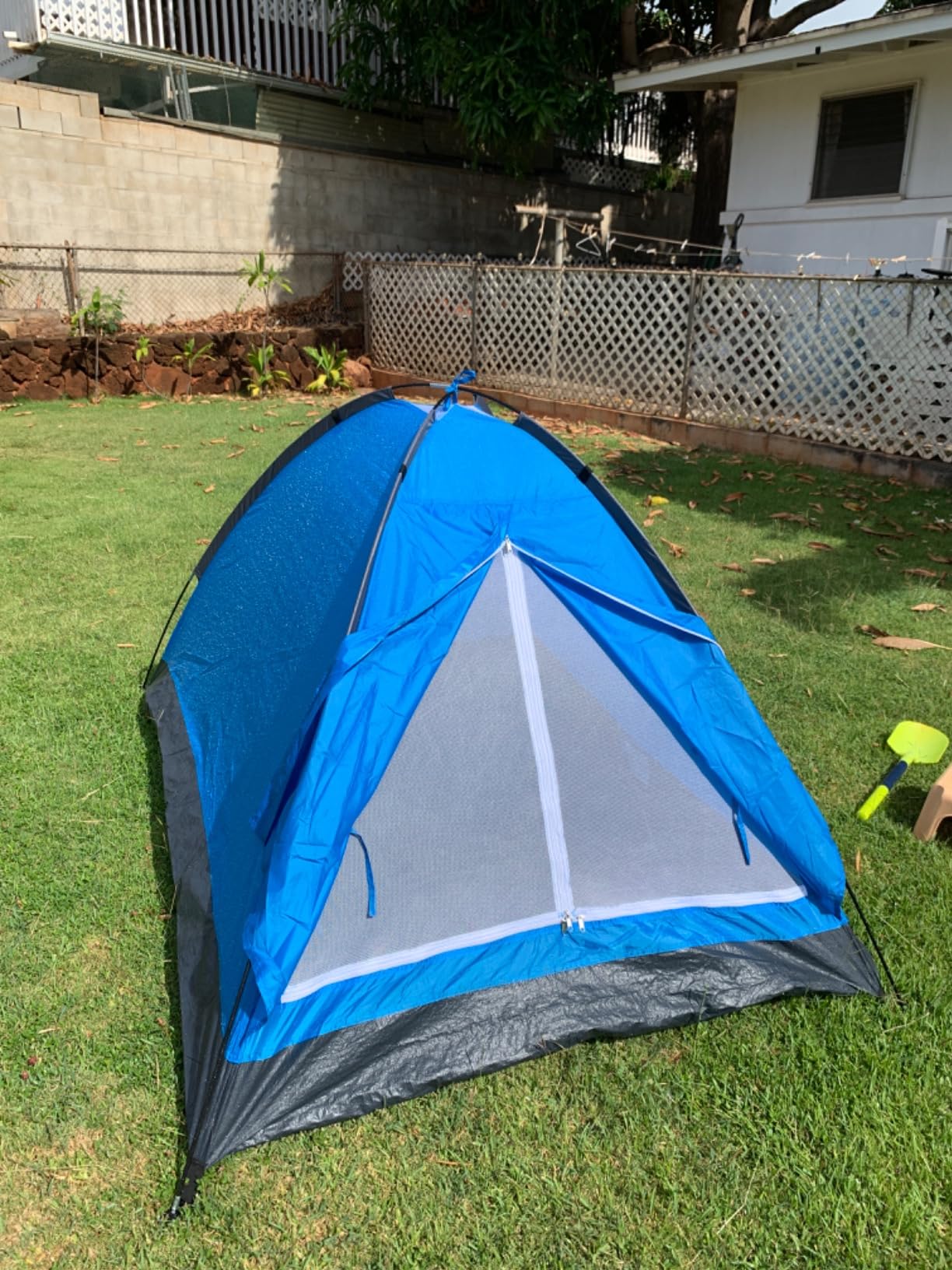
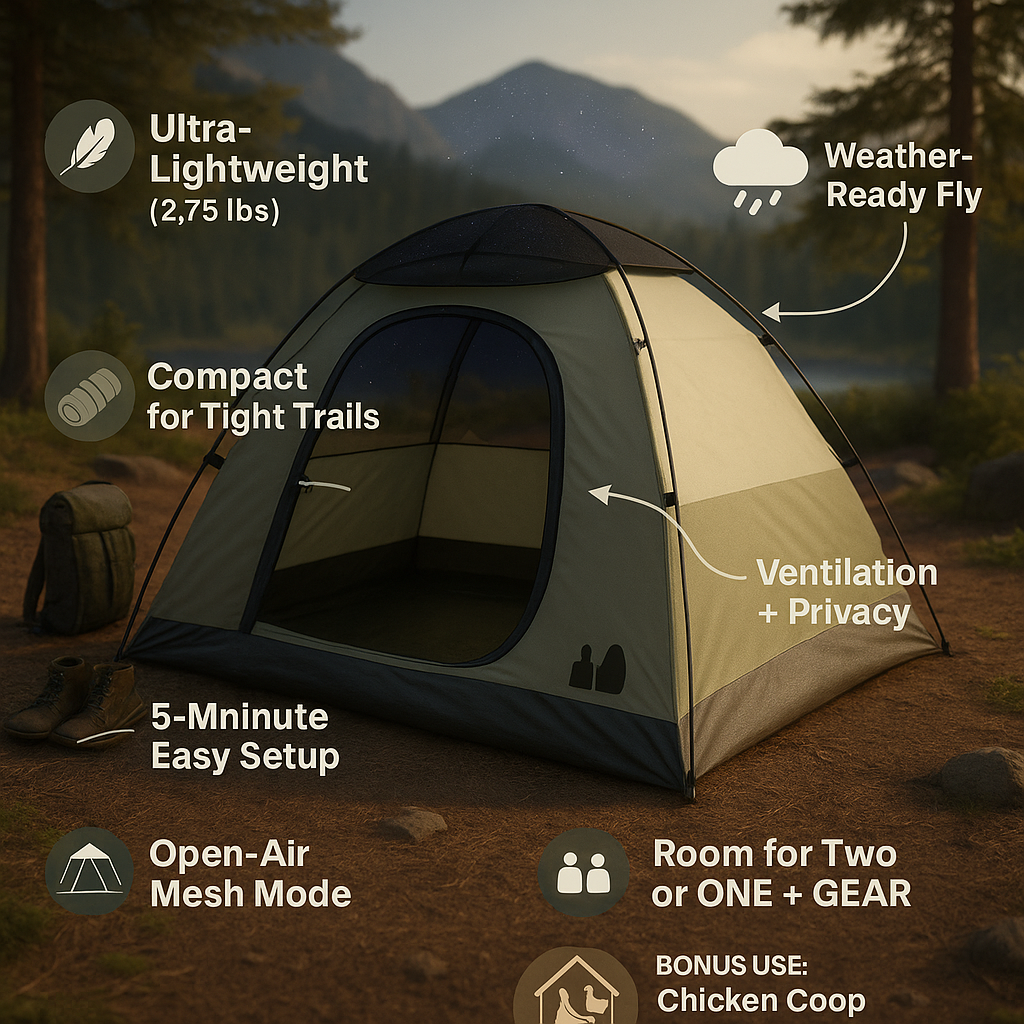
Our Verdict!
From the above roundup of the top options for best backpacking tent under $100, the Wakeman Camping Tent turned out to be Best Overall, given its top class performance, price and the overall value it offered us. Having said that, we also picked two other options that stood out in one specific feature very easily. Let’s have a look at them below!
- Best Value for Money: JELUCAM Dome Tent
- Best Sturdiness: CAMEL CROWN Tent
How to Choose the Best Backpacking Tent Under $100
Finding the best backpacking tent under $100 that actually lasts can feel like searching for a unicorn—but trust us, they do exist. The key is knowing which features matter most when you’re out on the trail with your shelter strapped to your back. Here’s what we’ve learned from real-world use:
✅ 1. Weight and Packability Matter More Than You Think
When you’re hiking for miles, every ounce counts. A good backpacking tent in this price range should be light enough to carry without breaking your back and compact enough to fit easily into or on your pack. Aim for something under 5 lbs, with a small carry bag that won’t take up half your pack space. Pop-up tents may be bulkier, while traditional dome styles usually pack down smaller.
✅ 2. Weather Resistance Is Non-Negotiable
Your best backpacking tent under $100 should be able to handle a bit of rain and wind. Look for tents with waterproof coatings (like PU2000 or higher), sealed seams, and tub-style floors to keep moisture out. A decent rainfly and solid frame design go a long way when the skies turn on you. Bonus points for windproof ropes and reinforced corners.
✅ 3. Setup Should Be Fast and Frustration-Free
After a long day on the trail, the last thing you want is a 20-minute wrestling match with your tent poles. Look for models with shock-corded or pre-attached poles, pop-up designs, or simple dome structures that one person can pitch in under 10 minutes. Quick setup can mean the difference between a relaxed evening by the fire—or one spent cursing at bent poles in the dark.
What makes a good backpacking tent?
A good backpacking tent strikes the perfect balance between lightweight design, weather protection, and packability. It should be light enough to carry comfortably over long distances—typically under 5 pounds—yet sturdy enough to handle wind, rain, and rough terrain. Features like durable waterproof fabric, taped seams, a full-coverage rainfly, and strong poles are essential to keep you dry and protected. Ventilation is also key, with mesh panels that allow airflow without letting bugs in. And finally, a quick, intuitive setup can make all the difference after a long hike—because when you’re exhausted and racing against sunset, the last thing you want is a complicated pitch.
What is the difference between a tent and a backpacking tent?
A tent is a general term for any portable shelter used for outdoor camping, ranging in size from tiny one-person setups to massive multi-room family tents. A backpacking tent, on the other hand, is specifically designed to be lightweight, compact, and easy to carry—because you’re hauling it on your back, not in the trunk of a car. While standard tents may prioritize space and comfort, backpacking tents focus on minimal weight, small packed size, and fast setup, often sacrificing extra room or features to keep things efficient on the trail. Simply put, all backpacking tents are tents—but not all tents are built for backpacking.
What is the best bedding for a tent?
The best bedding for a tent strikes the perfect balance between comfort, insulation, and portability. For most campers, a high-quality sleeping pad or air mattress is essential—it cushions against hard or uneven ground and provides insulation from the cold. Pair it with a warm, season-appropriate sleeping bag (check the temperature rating!) and, for added comfort, bring along a compressible pillow or stuff a soft hoodie into a pillowcase. If you’re car camping, you can level up with a foam mattress topper or cot, but for backpackers, lightweight and compact gear is key. No matter your style, layering a tent footprint or soft blanket beneath your bedding can add extra warmth and keep things clean and cozy.
